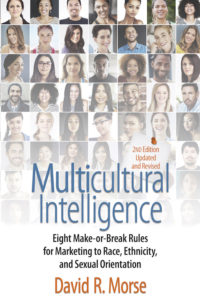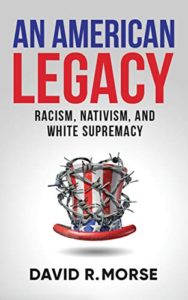This article first appeared on HuffPost and LinkedIn.
When I got into the business of multicultural marketing, at the turn of the millennium, the need to target multicultural segments seemed like a no-brainer. In the 2000 census, Hispanics surpassed blacks as the nation’s largest minority group. As we observed what came to be called “the browning of America,” our job as multicultural marketers was to evangelize, and to convince those laggards in corporate America of the imperative to reach out to different ethnic groups.
It wasn’t an easy task, despite the enormity of change. “I do not think that most Americans really understand the historic changes happening before their very eyes,” said Peter Salins, an immigration scholar and provost of the State Universities of New York. “What are we going to become? Who are we? How do the newcomers fit in – and how do the natives handle it – this is the great unknown.”
Today, that message seems almost anachronistic. Non-whites make up about 40 percent of the population, a figure that is expected to rise to a majority sometime around 2040. Take a walk around most neighborhoods in America and it will be patently obvious that America is anything but a country of white people
And we’ve seen how the natives handle it. Some of us relish the diversity. Still, last year, we witnessed the election of Donald Trump, who, when announcing his candidacy for the presidency, declared: “When Mexico sends its people, they’re not sending their best. … They’re sending people that have lots of problems, and they’re bringing those problems with us. They’re bringing drugs. They’re bringing crime. They’re rapists. And some, I assume, are good people.” Believe me, Mr. President, most are good people. Still, nearly half the country was okay with such a sweeping, (dare I say) racist statement.
Divided we stand. Three weeks into Trump’s presidency, in the middle of Black History Month, a survey from Public Policy Polling found that 46 percent of Trump supporters would like to have a White History month. A 2016 study by political scientist Marc Hetherington found that well over a third of Republicans, a nearly 90 percent white party, could be classified as “racially resentful”, with nearly a quarter considered “very resentful” about race.
Just last week, policy analysts at the Centers for Disease Control and Prevention were told by CDC officials that the word “diversity” is taboo, along with “vulnerable,” “entitlement,” “transgender,” “fetus,” “evidence-based” and “science-based.” Personally, I know few, if any people, who take offense at these words, with the exception of “entitlement.” But clearly, some Americans do.
In politics, we Americans could not be more divided. As political scientist James Q. Wilson observed in 2006, it’s not the first time that this has happened in our history. In 1800, pro-British, pro-commerce New Englanders supported John Adams for the presidency while pro-French, pro-agriculture Southerners backed Thomas Jefferson, which ended in the passage of the Alien and Sedition Acts in 1798. The fierce contest between Abraham Lincoln and George McClellan in 1864 resulted in another national division, this one over the conduct of the Civil War.
But as Wilson points out, apart from these examples, until recently, such polarization was unheard of. He writes, “Even in the half-century from 1948 to (roughly) 1996, marked as it was by sometimes strong expressions of feeling over whether the presidency should go to Harry Truman or Thomas Dewey, to Dwight Eisenhower or Adlai Stevenson, to John F. Kennedy or Richard Nixon, to Nixon or Hubert Humphrey, and so forth, opinion surveys do not indicate widespread detestation of one candidate or the other, or of the people who supported him.”
And nowhere, and perhaps at no time other time, other than the Civil War, have racial divisions continued to draw such imposing national attention. The removal of Confederate statues became a flashpoint as Americans debated whether the statues perpetuated racism or merely reflected our history. In August, a white supremicist rally in Charlottesville, Virginia, led to violent clashes in the city’s streets. Most recently, in the NFL, some players protested racial injustice and police mistreatment of blacks by kneeling during the national anthem, a move that provoked anger among those, including our President, who saw the protests as disrespectful.
According to Pew Research Center, much of the discord is being driven by the political polarization of America. Pew found that the overall share of Americans who express consistently conservative or consistently liberal opinions has doubled over the past two decades from 10% to 21%. Additionally, ideological overlap between the two parties has diminished: Today, 92% of Republicans are to the right of the median Democrat, and 94% of Democrats are to the left of the median Republican. In each party, the share with a highly negative view of the opposing party has more than doubled since 1994. Most of these partisans believe the opposing party’s policies “are so misguided that they threaten the nation’s well-being.” Interestingly, while just less than 1 in 3 Republicans feels that there is a lot of discrimination against Black people in the U.S., almost 8 in 10 Democrats support that statement.
It should be obvious that this political polarization is having an impact on marketing. In a May 2017 article in the Financial Times, “Advertisers Pull Back from Targeting U.S. Latinos,” Linda Lane Gonzalez, then President of the Association of Hispanic Advertising Agencies (AHAA), is quoted as saying: “a growing number of companies in the US are shying away from marketing efforts aimed at Latino consumers for fear of offending ‘racist’ supporters of President Donald Trump.” According to Gonzalez, some clients worry that customers and employees, specifically those who backed the President, would be angered by efforts to reach Latino customers such as bilingual signage and cultural diversity training. She cites an example of a client who asked whether their call-center menu should continue with a Spanish-language option.
Piggybacking the Times’ piece, an article in PRWeek contended that many company champions of multicultural marketing are facing more internal resistance since the election of Trump. Said Pablo Miró, Vice President of Newlink, a consultancy firm specializing in multicultural marketing, “Under the Obama administration, no one would have questioned the importance of this growing minority group…now people feel like they can disagree with that notion.”
To paraphrase, the Chinese adage, we live in interesting times. And, in many ways, marketing in America has never been more difficult, if not fraught with danger.
Unfortunately, few of us in the multicultural marketing community have come up with an adequate response to the challenge. Take the case of Total Market, an approach being embraced by some of the top companies in the U.S., including Clorox, Dunkin’ Brands, Kellogg’s, and Kimberly Clark.
According to the powers that be, Total Market is:
A marketing approach followed by corporations with their trusted internal and external partners which proactively integrates diverse segment considerations. This is done from inception through the entire strategic process and execution, with the goal of enhancing value and growth effectiveness. In marketing communications, this could lead to either one fully integrated cross-cultural approach, individual segment approaches, or both in many cases, but always aligned under one overarching strategy.
In my opinion, it’s a definition that says, in other words, as long as there is a single strategy, the communications approach can be, well, anything. As Alejandro Ruelas, CMO and Managing Partner of LatinWorks, put it: “The ‘total market’ idea means different things to different people, because the term was recklessly floated into the marketing lexicon without a clear definition. As a result, it’s now a concept that being defined to fit as needed and embraced by certain agencies and clients to serve self-interests.” Or in the words of Pepper Miller in a 2016 piece in Forbes: “In reality, it’s business as usual, with multicultural segments being addressed via casting and work that is often stereotypical. And many marketers are now realizing that multicultural market share and customer-satisfaction gains made when ethnic agencies were used are evaporating.”
As a marketing community we need to do better. Obviously, a one-size-fits-all approach isn’t going to work. A carefully designed segmentation might do better, but that too runs the risk of backfiring. The more cultural “buttons” a campaign pushes, the higher the risk of alienating other segments.
Still, some basic rules still apply. Understand and articulate what your brand stands for and identify the consumers with whom your messaging is most likely to resonate. Consider taking a stand based on your company values. And do your market research to understand how your messaging will be received by each segment. With public apologies being worth a dime a dozen these days, it’s a lot easier to get things right the first time.
Perhaps HP’s CMO, Antonio Lucio, said it best in a recent piece in Business Insider:
“Politicians may thrive on division and conflict to rally their bases. Big global brands cannot afford this. We earn our customer’s trust and loyalty every day. We must stand for those values that unite us. Prioritize people over political viewpoints. Encourage people to reconnect with friends and family. And search for common ground. Great brands can help create this understanding, playing a meaningful role in people’s lives. They stand for more than the products they sell and make a lasting impact on society. Great brands surprise us, inspire us, make us feel and always motivate us to act. Companies like Airbnb, Procter & Gamble and Patagonia have all shared an aspirational vision for the world. They’ve taken a stand in a meaningful way on social issues – something people now expect from their brands.”



